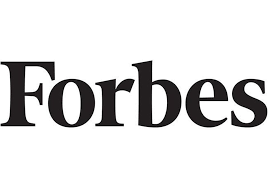
Why Graph ETL Is Different?
With a property graph of the type that Neo4j implements, ETL is like an RDBMS in terms of loading the nodes and putting the properties in the nodes. But with graphs, the ETL must also create edges (the way in which one node is connected to another). If you have a new node, the ETL must be able to recognize the other nodes the new node must be connected to. You also have to add property information to the edge itself.
This means you need an algorithm that searches through other nodes and discovers how to connect to the nodes you need the edges for. The point is that this process is not just about putting data in a table like an RDBMS — it is more complex.
Here are different ways graph vendors are supporting graph ETL using different approaches that each will a wide variety of use cases with a good fit.
How Neo4j’s Morpheus Project Supports More Automated Graph ETL and Graph Combinations
Copyright 2018 Forbes Media LLC. All Rights Reserved. ALL MATERIALS AND SERVICES ON THE WEBSITE, OTHER CHANNELS, AND ANY THIRD-PARTY SITES TO WHICH THE FOREGOING LINKS ARE PROVIDED “AS IS” OR “AS AVAILABLE” WITHOUT WARRANTY OF ANY KIND. FORBES IS NOT RESPONSIBLE FOR THE AVAILABILITY OR CONTENT OF OTHER SERVICES THAT MAY BE LINKED TO THE WEBSITE OR OTHER CHANNELS. BECAUSE FORBES HAS NO CONTROL OVER SUCH SERVICES, YOU ACKNOWLEDGE AND AGREE THAT FORBES IS NOT RESPONSIBLE FOR THE AVAILABILITY OF SUCH EXTERNAL SERVICES, AND THAT FORBES DOES NOT ENDORSE AND IS NOT RESPONSIBLE OR LIABLE FOR ANY CONTENT, ACCURACY, QUALITY, ADVERTISING, PRODUCTS OR OTHER MATERIALS ON OR AVAILABLE FROM SUCH EXTERNAL SERVICES.
Keywords: